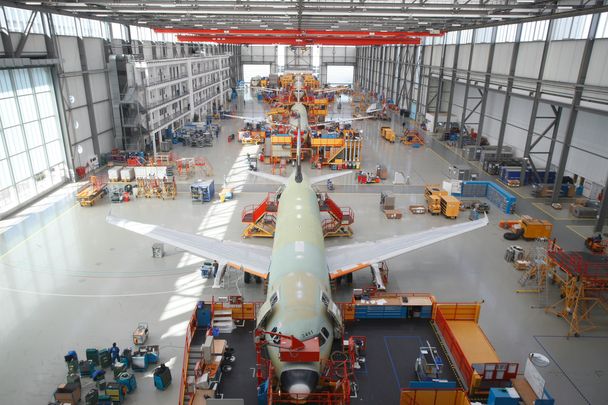Meet André, technical solutions manager at Airbus Commercial Aircraft

On May 24th we’re celebrating the dedication of all Airbus maintenance employees behind the scenes who take care of the safety of the whole in-service Airbus family fleet around the world. Did you know that the aviation industry will need over 700,000 maintenance personnel by 2035? Find out how maintenance is at the heart of our purpose and you too may just get inspired to make a career out of it!
To find out more about maintenance at Airbus we talked to technical solutions manager André Soureil, who is preparing to call time on his 35-year Airbus career. Here he shares his experience of life in maintenance and aftersales.
André, what is your background?
I graduated in electrical engineering and joined Airbus - in the Aerospace division - in 1988. I started out in the rapid response team. Our job was to manufacture out-of-stock parts to get aircraft back into service as quickly as possible. From there I moved to tool repair, before joining aftersales in the mid-90s. I haven't left since.
My job involves converting, upgrading or repairing aircraft. For a long time, we would be assigned to one or the other of these activities. Now major repairs to damaged aircraft have taken precedence.
Why did you want to work in maintenance and what do you like most in your role?
What interested me was being in contact with in-service aircraft. For the rest, I like teamwork. Everyone makes their own contribution. Every role is important. Then I like carrying out the various tasks required to repair or maintain the aircraft for safe flight: analysis, planning, preparation of all the resources required for the mission, etc. Lastly I like the relationship with the customer, working together to achieve the final objective.

What are the main challenges of your role?
There are many, but the main one is to be available. There were times when I didn't see my children grow up. There have been times when I've spent weeks or even months in Dubai. Fortunately, I had great support at home.
Questions of availability still arise today, but to a lesser extent. Management has become much more attentive to the importance of maintaining a balance, as far as possible.
What was the most exciting or memorable day of your career?
There have been several, such as the mission to Zurich to repair an A340 whose avionics bay had been damaged by a severe hydraulic system issue; or the eight months spent in Tunis in 2020 to repair a Libyan A320 riddled with over 800 bullet holes.
But the mission that made the biggest impression on me was in Dubai in 2009, working with my colleagues to repair an A380 whose avionics bay had suffered a major short-circuit. I joined the repair team as a matter of urgency to manage the documentation and plan the work. Airbus’ reputation and that of the A380 were at stake, and the work was extremely intense. An electrical cabinet weighing over 400 kg had to be rebuilt in just a few days, under the watchful eye of Airbus management and the customer.

How do you see maintenance in the future?
It's a sector that will continue to grow in importance, as the global in-service fleet expands. As for the job itself, I think we'll still need human expertise, but we’ll be increasingly helped by artificial intelligence.
What advice would you give to anyone interested in a career in aviation maintenance?
I would advise them to be humble and very curious. Don't be afraid to ask questions, because you're always learning from others and that prevents you from getting stuck in a rut. You have to read the documentation - that's the basics - and be familiar with regulation.
Be humble and very curious. Don't be afraid to ask questions
You need to enjoy company and teamwork, where everyone contributes their expertise. On your own, you're nothing. Finally, aftersales gives you the opportunity to come into contact with many different cultures, lifestyles and ways of working. It's exciting and very rewarding.



